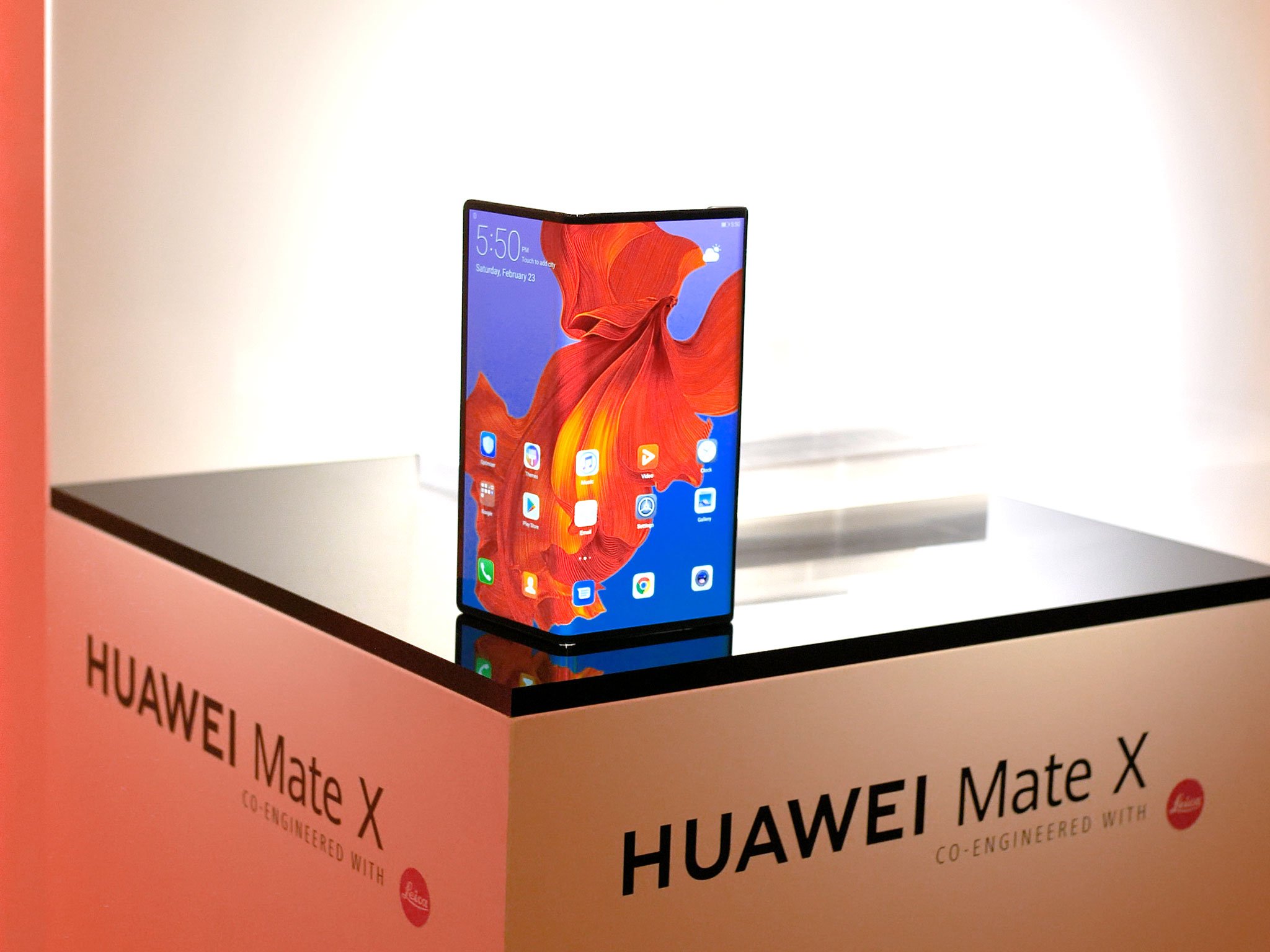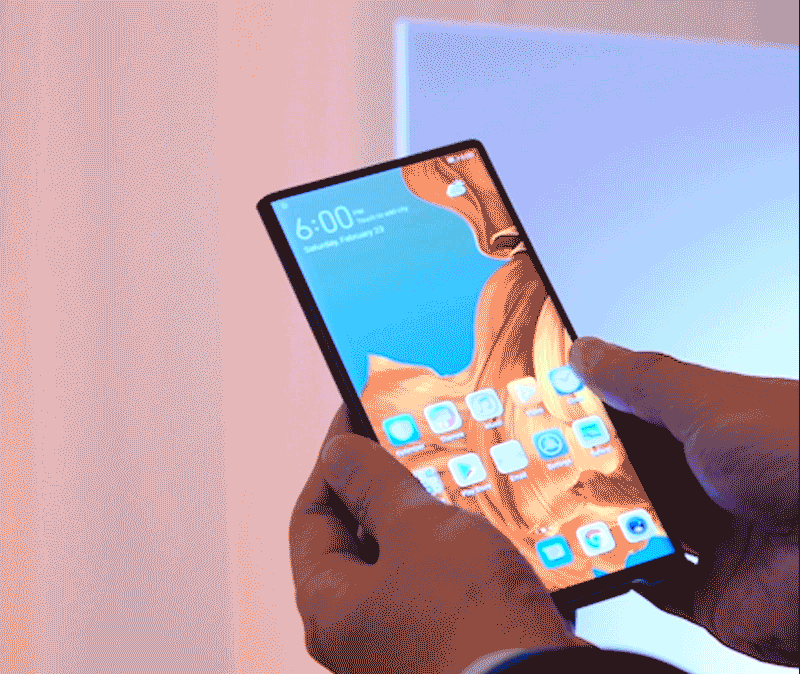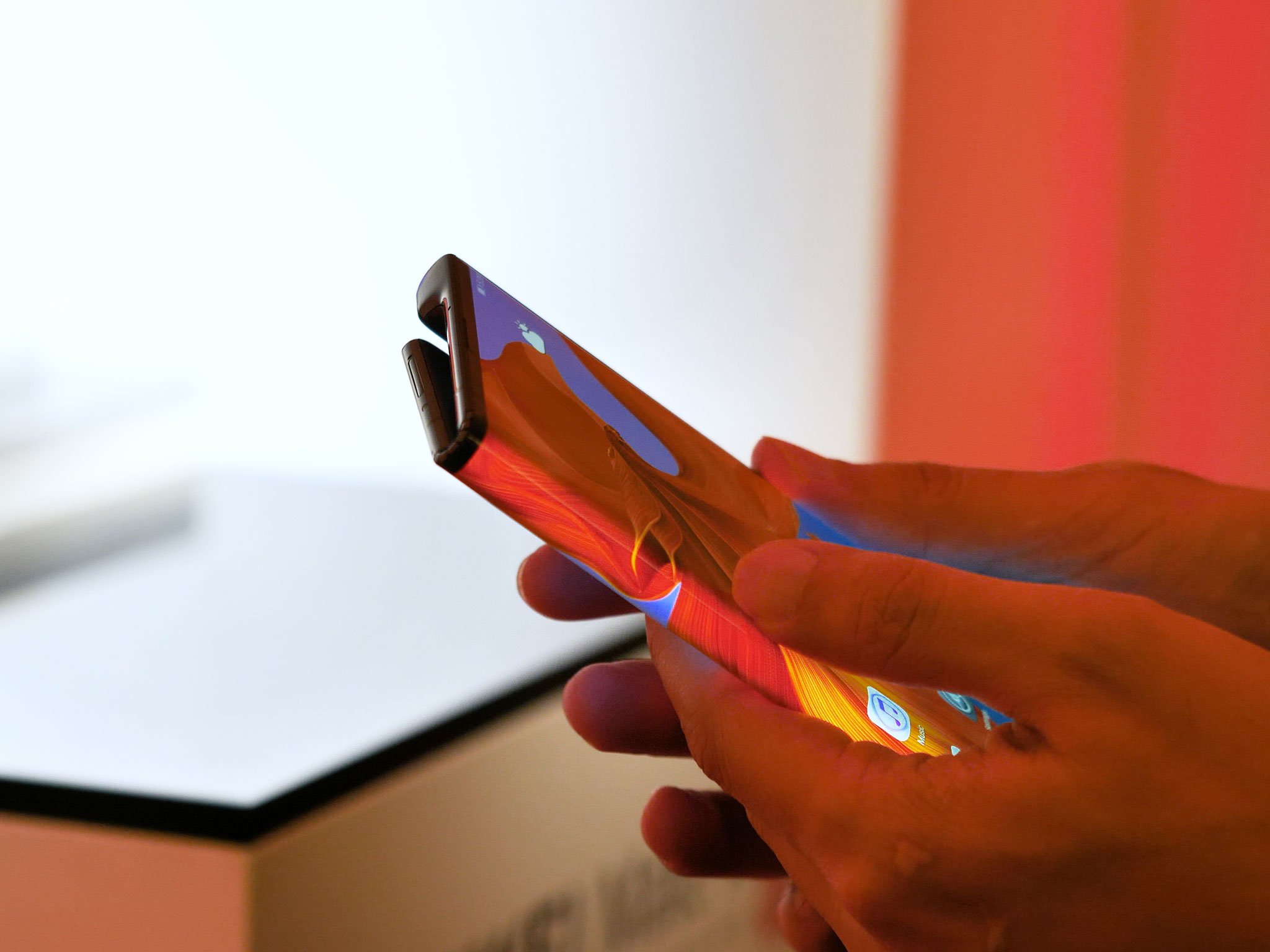First impressions of Huawei's new foldable are positive — but there's a lot we don't yet know
Mobile World Congress 2019 is obsessively fixated on two major trends: 5G and foldable phones. So it stands to reason that Huawei's first entrant into both categories should debut at the Barcelona-based trade show.
This is the Huawei Mate X. It's super-thin, (supposedly) super-fast, and quite unlike any of the handful of foldables we've seen so far. The basic design of this foldable is what you might call an "outie" — the screen's on the outside, as opposed to the Samsung Galaxy Fold, which has its screen on the inside and a secondary display on the shell. (We'd call that one an "innie," by the way.)
All of which means the Mate X can be split into three display sections depending on how it's folded. When it's fully flat it gives you an 8-inch square-ish tablet display (the exact aspect ratio is a slightly odd 8:7.1) at 2480x2200. In everyday phone mode it's got a 6.6-inch 18.5:9 panel at 2480x1148. That's about the same size as a regular large phone, only without the bezels or screen notch you might be expecting. When it's folded shut, the other side of the device houses a 6.38-inch 25:9 display, which sits alongside the camera modules.
The Mate X is a big phone or a small tablet, depending on how you look at it.
That orientation and sheer number of screen configurations takes a while to get your head around, but actually makes a lot of sense in terms of how the Mate X is put together. The folded-out tablet display is simply 100% screen, with dimensions and stats that compare favorably to a smaller tablet. (And without the fringe-style notch of the Galaxy Fold.) You get all the benefits of an Android tablet, such as they are, like multi-window support and easier navigation in apps with multiple panels, like Gmail.
The phone-sized panel is exactly what you'd expect: an all-screen front face, with no notch, because there's no need for a front facing camera. It looks like a modern, full-screen smartphone, only thicker and slightly more angular.
But before we digress, it's worth underscoring why you don't need a front-facing camera? The answer lies in one of the major strengths of foldable devices like this. Instead of cutting into valuable display real estate, just flip the device around and to reveal a portion of screen there next to the quad Leica camera array.
In tablet mode, you get a camera that's as good as a flagship smartphone — at least in theory. While the quad camera pack is Leica-tuned, Huawei wasn't revealing too many further details at its Barcelona preview event. It's safe to say, though, that given Huawei and Leica's track record, this thing should take better photos than your average tablet.
Foldable photography lets you — or your subject — see a preview of the shot.
The foldable nature of the Mate X's display also opens up some unique features in portrait shots. In phone mode, where you're framing up your shot on the larger display, you can let the subject of your shot see what they look like with a rear-facing preview on the smaller chunk of screen. Plus, you can see yourself when you're taking a selfie without the need for a dedicated front-facing camera — meaning your selfies (again, in theory, because we know nothing else about these cameras) look as good as portraits taken with the rear camera of a flagship phone.
All this sounds very promising, however as we discovered with the Royole FlexPai, tapping the potential of a foldable handset is far from simple. And considering we haven't even held the device yet, it's worth taking Huawei's claims with a pinch of salt.
There's more to the Mate X than the way the screen works and the camera features it enables.
But there's more to the Mate X than the way the screen works and the camera features it enables. The device itself is also exceptionally slim, because it stores all the bulky components in this handle area where the cameras live. (That wedge area is also designed to make it easier to wrangle in one hand.) The display portion measures just 5.4mm thick — thinner than current-generation iPads. Huawei claims the phone's folded thickness comes in at just 11mm, which with a little math means that the Mate X is folding more or less flat, unlike the gap left by the innie-folding Samsung Galaxy Fold. Huawei is also keen to point out the significantly smaller bezels allowed by this approach — although the device remains chunkier than standard non-folding smartphones.
We were only able to inspect Huawei's new "falcon wing" hinge design at a distance, but it appeared less obtrusive than the FlexPai's ugly rubberized hinge. More importantly, it allowed the Mate X to, as near as we were able to tell, fold completely flat in either configuration.
The Huawei Mate X spec sheet still has a few gaps, since the company didn't reveal all the device's internal specs ahead of launch. Nevertheless, we do know that the phone runs a Kirin 980 processor, the same chip that powers the Mate 20 series, and it's paired with Huawei's Balong 5000 5G modem for speeds of up to 4.6Gbps on sub-6GHz 5G networks. Those are impressive speeds, but they'll be more impressive when sub-6 5G networks are actually up and running.
You've also got a fingerprint scanner tucked away in that tiny power button on the side for biometric security. And it's all powered by a split 4500mAh battery using a new revision of Huawei's SuperCharging tech. The latest version runs up to 55W to juice you up to 85% in just 30 minutes. (That's compared to 40W in the Mate 20 Pro, and 20W in earlier Huawei flagships.)
On the surface, the Huawei Mate X is a highly impressive piece of technology, but many questions remain around pricing, performance and software features. One of the potential areas of weakness is Huawei's EMUI interface, which has a reputation for overbearing UI choices and general software weirdness, particularly on tablets. Right off the bat, I have some concerns around how well EMUI can adapt to a brand new form factor, particularly when I've seen how poorly it runs on a straight-up Android tablet. And that's aside from any hardware issues that might arise over time such new technologies, like wear and tear on the hinge, and scratches on the plastic-coated flexible display.
With the Mate X, like almost all other foldables, information is scant, as the manufacturer slowly and frustratingly drips out information. It's way too soon to say whether the Mate X is the best Android foldable, or even a thing you should consider spending money on. At this very early stage, all we can say for sure is that, after an extremely challenging few months for the Chinese firm, it puts Huawei back in the news again for the right reasons.
from Android Central - Android Forums, News, Reviews, Help and Android Wallpapers https://ift.tt/2SXNUMf
via IFTTT





No comments:
Post a Comment